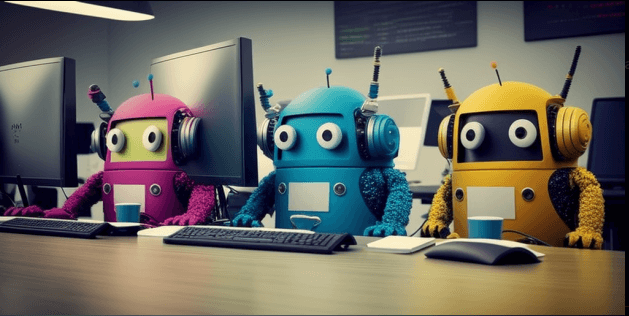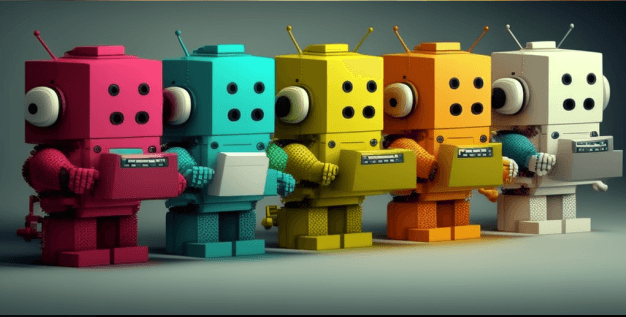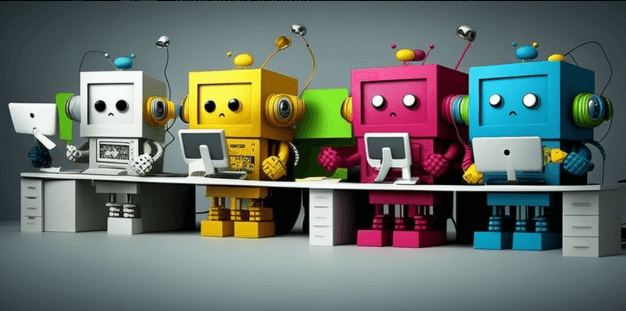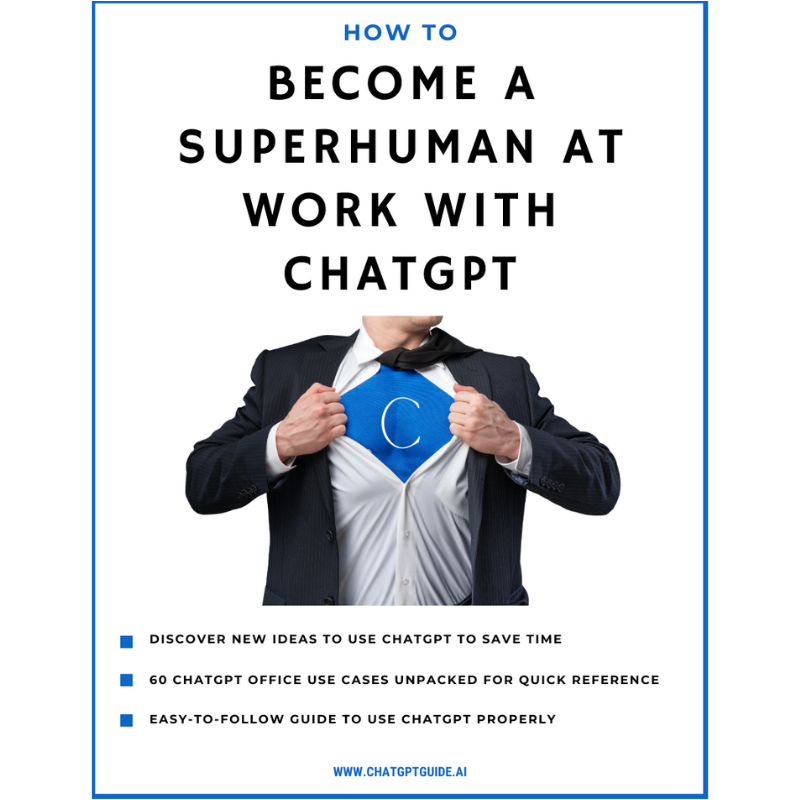Have you ever wondered how technology keeps evolving and transforming the world around us? Well, today we’re diving into the fascinating realm of ChatGPT and exploring its potential to shake up the world of white-collar work.
ChatGPT is a groundbreaking language model developed by OpenAI. Its purpose? To engage in human-like conversations and provide responses that are coherent and contextually relevant. In simpler terms, it’s like having a chat with a highly advanced virtual assistant!
But here’s where things get really interesting. ChatGPT has the potential to disrupt the traditional landscape of white-collar work as we know it. The aim of this article is to explore the various ways in which this cutting-edge technology could destabilize the world of professionals who primarily work in office settings, relying heavily on their cognitive skills and knowledge.
So, fasten your seatbelts and get ready to embark on a thought-provoking journey.
Understanding ChatGPT and AI
At its core, ChatGPT is powered by an advanced form of artificial intelligence known as transformer models. These models, like OpenAI’s impressive GPT-3, are trained using massive amounts of data to learn patterns, context, and language structure. Think of it as a giant language sponge, soaking up information from the vast expanse of the internet.
How does ChatGPT generate text and interact with users?
So, how does ChatGPT actually generate text and interact with users? Well, it’s like having a virtual conversation with a super-smart language prodigy. You give it a prompt or ask a question, and it uses its vast knowledge to generate a response that’s tailored to the context. It’s designed to mimic human conversation, understanding the nuances and adapting its answers accordingly.
To give you a relatable example, imagine you’re planning a vacation and you want some recommendations for the best beaches. You can ask ChatGPT something like,
“Hey ChatGPT, I’m looking for breathtaking beaches in Hawaii. Any suggestions?”
It will then delve into its knowledge database and generate a response, offering you a list of stunning beaches complete with descriptions, insider tips, and even nearby attractions. And, like a knowledgeable friend who has been to Hawaii, you can ask follow-up questions, for example: “Which beach is most kid-friendly”, and it will be able to quickly spit out direct answers.
Here are some examples of things you could use ChatGPT for as a white-collar worker:
| Use Case | Category | Sample Prompt |
|---|---|---|
| Drafting emails | Corporate | “Draft an email about the quarterly sales report.” |
| Writing company blog posts | Corporate | “Write a blog post about our company’s sustainability efforts.” |
| Preparing meeting agendas | Corporate | “Prepare an agenda for a project kickoff meeting.” |
| Assisting with customer service | Project Management | “A customer is complaining about a late delivery. How should we respond?” |
| Assisting with project planning | Project Management | “Help me create a project plan for developing a mobile app.” |
| Explaining project management concepts | Project Management | “Explain the concept of Agile methodology.” |
The history and current state of AI in the workplace
Artificial intelligence has been making waves for quite some time now, gradually finding its way into various industries. In the workplace, AI has already proven its worth in areas like data analysis, customer service, and even medical diagnostics.
But here’s the thing: ChatGPT takes AI to a whole new level. Its conversational abilities and contextual understanding push the boundaries of what AI can achieve. It has the potential to bring about significant changes in white-collar work, which we’ll dive into in the upcoming sections.
You may also like 📖
The Role of ChatGPT in White-Collar Work

To understand the potential impact of ChatGPT, let’s first explore what we mean by white-collar work. White-collar work typically refers to professional roles that involve cognitive tasks, often performed in office settings. Think of industries like finance, consulting, law, marketing, and even journalism.
These are the domains where human intellect, problem-solving, and expertise are highly valued. So, when we talk about the potential effects of ChatGPT on white-collar work, we’re examining how this AI technology might disrupt and transform these industries and the roles within them.
For instance, in finance, where data analysis, market research, and investment strategies are crucial, ChatGPT’s ability to process vast amounts of information and generate insights could challenge the way financial analysts operate.
Similarly, in the legal field, where lawyers spend significant time researching case laws and precedents, ChatGPT’s capacity to quickly retrieve relevant information could redefine the tasks and efficiencies of legal professionals.
How ChatGPT is already used in white-collar industries
Now, let’s explore some current examples of how AI and ChatGPT are already making their mark in these white-collar industries.
In marketing, for instance, AI-powered algorithms analyze consumer behavior, enabling companies to tailor their advertising campaigns and reach the right audience more effectively.
In the realm of data analysis, AI algorithms can sift through enormous datasets, spotting patterns and trends that would take humans ages to identify. This has revolutionized industries such as finance, marketing, and research, enabling organizations to make more informed decisions and stay ahead of the game.
In customer service, AI-powered chatbots have become increasingly prevalent. Think about those live chat windows that pop up when you visit a website, offering assistance. Often, you’re actually chatting with an AI-powered bot that’s been trained to provide quick and helpful responses to common queries. It’s a win-win situation for both customers, who get their questions answered promptly, and companies, who can handle large volumes of inquiries efficiently.
These are just a couple of instances where AI is already playing a role, but ChatGPT’s capabilities take things to a whole new level by providing more natural and contextually relevant interactions.
Here are some current use cases of ChatGPT being utilized within the workplace
| Role/Industry | Description |
|---|---|
| Content Creation | ChatGPT generates high-quality content for websites, blogs, or social media platforms including product descriptions, blog posts, social media posts, and drafts for business ideas. |
| Translation Services | ChatGPT translates text from one language to another. |
| Conversational AI | It’s used in creating intelligent chatbots for customer service, sales, or support, and personal virtual assistants. |
| Coding | ChatGPT writes code for simple tasks, assists in debugging code, aids in code completion, recommends methods to refactor code, proposes suitable documentation templates, and generates code snippets. |
| Course Content Creation | Assists teachers in developing innovative ideas for lesson plans, activities, and projects, and produces and organizes instructional content like presentations, worksheets, and quizzes1. |
| Grammar and Writing Check | Used in the assessment and enhancement of written work, such as proofreading and editing, providing feedback to students, and teaching writing skills. |
| Grading | Assists teachers in grading student essays by evaluating content, structure, and coherence of written work. |
| Designing Syllabus Outline | Helps in creating, organizing, and structuring course content. |
| Homework Assistance | Helps students in answering questions, problem-solving, concept reinforcement, and improving writing skills. |
| Research Assistance | Supports the research process for academic projects and assignments, such as topic selection, background information gathering, identifying relevant resources, organizing research, and citation assistance. |
| Language Learning | Offers translations, grammar explanations, vocabulary practice, and conversation simulations to help students practice and improve their language skills. |
| Content Marketing | Creates content like emails, social media posts, blog articles for content marketing campaigns, and scriptwriting for advertising goods and services. |
| Customer Experience Personalization | Generates personalized content for customers that takes into account their preferences, past behavior, and demographics. |
| Audience Research | Analyzes customer data such as search queries, social media interactions, and past purchases to identify patterns and trends in customer behavior. |
| Product Descriptions | Assists in crafting engaging and informative product descriptions that align with the interests and preferences of the target audience. |
| Customer Support Chatbot | Provides prompt and personalized customer support, addressing customer inquiries, offering technical support, and troubleshooting issues. |
| Customer Surveys | Helps with creating customer surveys, including question generation, organizing survey structure, making surveys multilingual, and survey analysis. |
| SEO Content Writing | Generates topic ideas for SEO content writing by producing relevant keywords and phrases, analyzing competitors’ content, and suggesting topics based on current trends and user search queries. |
| Keyword Research | Performs functions in keyword search optimization such as generating keywords and identifying keyword trends. |
You may also like 📖
What does the future hold for ChatGPT in white-collar industries?
Predicting the exact trajectory is challenging, but we can make some educated guesses. As ChatGPT continues to improve and evolve, we can anticipate its integration into more specialized fields. In healthcare, for example, doctors might rely on ChatGPT for diagnosing rare medical conditions by tapping into its vast medical knowledge and expertise.
Additionally, in the realm of content creation, we will witness the rise of AI-generated articles, reports, and even novels, where ChatGPT assists authors and journalists in generating drafts, conducting research, and fact-checking. While human creativity and expertise will remain paramount, ChatGPT’s contribution as a powerful assistant could redefine how content is produced in the future.
In essence, ChatGPT’s role in white-collar work is still unfolding, but it holds the potential to reshape industries, redefine job roles, and augment human capabilities.
We have the largest collection of how to make money with ChatGPT articles here
- AI for Artists: How to Use ChatGPT to Write Songs and Monetize Your Music
- Earn with ChatGPT-Generated Fiction on Kindle Direct Publishing
- ChatGPT: Your Secret Weapon for Winning Writing Contests and Landing Lucrative Prizes
- ChatGPT for Real Estate: How to Write Property Descriptions that Sell and Make Big Bucks
- ChatGPT and Stock Market: How to Use AI to Write Financial Reports and make money
- How to Use ChatGPT to Start a Profitable Review Blog
- Navigating Market Saturation: A Guide for Aspiring Online Entrepreneurs
Potential Impacts of ChatGPT on White-Collar Jobs

As ChatGPT becomes more sophisticated and capable, there is a concern that certain tasks and roles traditionally performed by humans could be taken over by AI. For example, in data analysis, ChatGPT’s ability to quickly process and interpret vast amounts of information might replace the need for human analysts in some cases.
The effect of ChatGPT on productivity and efficiency
On the flip side, there’s the potential for increased productivity and efficiency in white-collar work. ChatGPT’s ability to rapidly generate accurate responses and insights can save professionals valuable time.
Instead of spending hours researching and compiling information, professionals can leverage ChatGPT’s vast knowledge base to quickly access relevant data and make informed decisions. This boost in efficiency can lead to more streamlined workflows and faster problem-solving, enabling professionals to focus on higher-level tasks that require human creativity and critical thinking.
To illustrate, imagine a marketing team trying to analyze a large dataset to identify consumer trends. With ChatGPT, they can input their queries and receive insightful patterns and recommendations in a fraction of the time it would take to manually comb through the data. This accelerated process allows marketers to respond swiftly to market changes and tailor their strategies accordingly.
We have a whole bunch of articles on how to make money with ChatGPT here
- AI for Artists: How to Use ChatGPT to Write Songs and Monetize Your Music
- Earn with ChatGPT-Generated Fiction on Kindle Direct Publishing
- ChatGPT: Your Secret Weapon for Winning Writing Contests and Landing Lucrative Prizes
- ChatGPT for Real Estate: How to Write Property Descriptions that Sell and Make Big Bucks
- ChatGPT and Stock Market: How to Use AI to Write Financial Reports and make money
- How to Use ChatGPT to Start a Profitable Review Blog
- Navigating Market Saturation: A Guide for Aspiring Online Entrepreneurs
Expect a change in job roles and responsibilities
As ChatGPT integrates into white-collar industries, we can expect a change in job roles and responsibilities. While some tasks may be automated, new opportunities will emerge for professionals to collaborate with ChatGPT and utilize it as a powerful tool.
Rather than viewing ChatGPT as a competitor, individuals can embrace it as a valuable assistant that complements their skills. Job roles may evolve to include managing and fine-tuning AI systems, curating and validating the output generated by ChatGPT, and ensuring ethical use of the technology.
For example, in content creation, instead of replacing human writers, ChatGPT can assist them in generating drafts or providing topic suggestions based on popular trends. The writer’s expertise and creativity are still essential in shaping the final product, but ChatGPT acts as a helpful partner in the content generation process.
The impact on job satisfaction and work-life balance
Finally, the impact of ChatGPT on job satisfaction and work-life balance is an important consideration. On one hand, ChatGPT’s ability to automate repetitive or mundane tasks can alleviate some of the burdens on professionals, allowing them to focus on more meaningful and fulfilling work. This can lead to increased job satisfaction and a sense of fulfillment as individuals can dedicate their time and energy to tasks that tap into their unique skills and passions.
However, there is also the risk of increased pressure and potential burnout. As ChatGPT enables faster and more efficient work, the expectation for productivity may rise. Professionals may feel the need to constantly keep up with the pace set by AI, leading to longer work hours and a blurring of work-life boundaries. It becomes crucial for individuals and organizations to strike a balance, setting realistic expectations and ensuring that the integration of ChatGPT supports a healthy work environment.
Mitigation Strategies
Strategies for workers to adapt to the changing job market
As the job market undergoes transformation due to ChatGPT and AI, workers can proactively adapt to these changes. One strategy is to focus on developing uniquely human skills that complement the capabilities of AI. These skills include critical thinking, problem-solving, creativity, emotional intelligence, and interpersonal communication. By honing these abilities, professionals can position themselves as valuable assets who can collaborate effectively with AI technologies.
For instance, in the legal field, while ChatGPT might assist in research and document analysis, lawyers can specialize in complex legal strategy development, negotiation, and client counseling, leveraging their expertise and human judgment.
Policy suggestions to reduce negative impacts
Mitigating the negative impacts of ChatGPT and AI requires a collective effort from governments and organizations. Governments can play a role by implementing policies that encourage upskilling and reskilling programs. This can include offering financial incentives, creating accessible learning platforms, and fostering collaborations between educational institutions and industries to ensure the workforce is equipped with the necessary skills to thrive in the changing landscape.
Organizations can also take proactive steps to lessen the potential negative impacts of AI integration. This can involve transparent communication with employees about the role of AI in the workplace, providing opportunities for retraining and upskilling, and fostering a culture of continuous learning. Organizations can also invest in technologies and systems that prioritize ethical AI use, ensuring that decisions made by AI models are fair, unbiased, and accountable.
We receive a small commission for any products you purchase through links in this box.
The Role of continuous learning
In the age of AI, continuous learning and skills upgrading become paramount. Professionals need to embrace a mindset of lifelong learning and adaptability. This involves regularly assessing their skill sets, identifying areas that require improvement, and actively seeking opportunities to learn new technologies and tools.
For example, professionals in finance can stay ahead of the curve by gaining expertise in data analytics, machine learning, or blockchain technology. By staying updated with emerging trends and acquiring relevant skills, individuals can position themselves for new opportunities and remain competitive in the job market.
On that note, organizations can support continuous learning by providing access to training programs, mentorship opportunities, and internal mobility. Encouraging employees to engage in lifelong learning not only benefits the individuals themselves but also promotes a culture of innovation and growth within the organization.
You may also like 📖
- How ChatGPT can help you find your next perfect getaway
- How to use ChatGPT as a Teacher in the Early Years Classroom
- How to use ChatGPT to create a yoga plan that aids weight loss
- Using ChatGPT to spark conversations for dates and couples
- How to use ChatGPT to write the best wedding speech ever
- How to use ChatGPT to create Fitness Plans that get results quick
- How to use ChatGPT to create a Budget that actually works
Conclusion
All in all, the potential impacts of ChatGPT on white-collar work are a mix of opportunities and challenges. While job displacement is a concern, there are also possibilities for increased productivity, evolved job roles, and enhanced job satisfaction. Striking the right balance between technology and job security is crucial.
Looking ahead, addressing challenges, and embracing opportunities will be key in navigating the evolving work landscape. By collaborating with AI, we can create a future that combines human expertise with technology, leading to innovative and efficient outcomes.
In this transformative era, it is important to approach the integration of ChatGPT and AI with an open mind and a proactive mindset. By embracing the possibilities, we can shape a future of work that values human expertise, nurtures creativity, and maximizes the benefits of technological advancements.
Together, we can navigate the challenges, seize the opportunities, and create a world where humans and AI collaborate to drive meaningful progress.




